Kalamazoo River to be restored through Trowbridge Dam removal project in Allegan County
By RACHEL LEIGHTNER
Michigan Department of Natural Resources
Discovered in the impoundments of an old Kalamazoo River dam are decades worth of toxic sediments nestled precariously between the riverbanks.
Should this more-than-a-century-year-old dam fail, a surge of dangerous contaminants would be released into the river’s watershed.
Recognizing the risk of the deteriorating structure, the Michigan Department of Natural Resources and the U.S. Environmental Protection Agency are removing the dam and restoring this contaminated space to a place benefitting the community.

The scene
Stretching 175 miles across the southwest corner of the Lower Peninsula, the Kalamazoo River has been a catalyst for growth and industry in the region.
In 1898, the Trowbridge Dam was built to supply hydroelectric power for a newly installed streetlight system in the city of Kalamazoo. Constructed by Consumers Energy, this dam was one of seven built to supply power to paper mills and municipalities along the river.
The river was also used to dispose industrial byproduct waste, contaminating the water, riverbanks and dam impoundments with carcinogenic, persistent polychlorinated biphenyls, known more commonly as PCBs.
Though this practice was banned in the 1970s, an accumulation of PCBs and other toxins is still concentrated in the impoundments behind the dams.
|
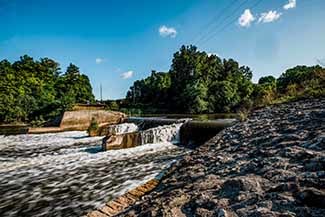
In 1967, Consumers Energy gave four Kalamazoo River dams, including the Trowbridge Dam, to the state of Michigan to oversee and maintain.
As a land and wildlife management agency, the Michigan Department of Natural Resources became the caretaker of the dam, with all its complexities.
“As with any dam, the condition of the Trowbridge Dam has declined over time,” said Mark Mills, field operations manager and dam removal project leader for the DNR. “If the dam were to give way, the concern is not only a surge of water, but an uncontrolled release of contaminated sediments washing downstream, exposing wildlife and humans to contaminants, and complicating cleanup efforts.”
Ranked highest priority
Due to public safety concern, the Trowbridge Dam was slated as the state’s highest-priority dam removal project in 2019.
|
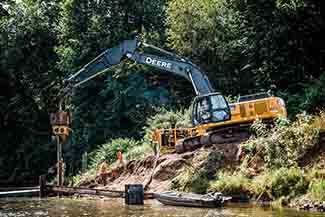
The DNR’s Wildlife Division received $1.9 million for removing the dam from the Michigan Dam Management Grant Program. This assistance program provides funding and technical aid for removal and repair projects at privately and publicly owned dams that will enhance recreational opportunities, restore natural resources, and improve public safety.
The DNR and the EPA will oversee this cooperative, multi-phased project.
Also recognized as a national priority, the dam was selected as one of 21 contamination sites to receive immediate and comprehensive attention from the EPA.
|
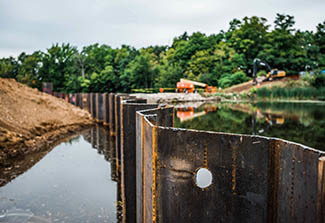
The Allied Paper Inc./Portage Creek/Kalamazoo River Superfund Site, consisting of the riverbanks, floodplains, and paper mill properties along the 80-mile stretch of the Kalamazoo River – from Morrow Dam to Lake Michigan, and a 3-mile stretch of Portage Creek – was established. This vast site was split into seven sections, divided by dams, and each will have its own remediation plan.
Facilitated by the DNR, the first phase of the Trowbridge Dam removal project began in August 2019, with the purpose of stabilizing the existing structure and initiating removal of the dam.
In this phase, metal sheet pile (long structural sections that connect to form a continuous wall) was installed along banks that were failing, and a section of the dam’s powerhouse structure, where generators and turbines were housed, was removed. This project phase was completed in April this year.
For the subsequent removal phases, the EPA has ordered the remediation and removal of PCB-contaminated sediment from the dam impoundment.
|

State and federal agencies will work with the companies liable for the pollution to remove the contaminated sediments, which will allow for removal of the remainder of the Trowbridge Dam structure and for restoration of the Kalamazoo River to its natural flow.
Funding future and past clean ups
In December 2019, a $245 million settlement was agreed upon, ordering the company responsible for the PCB contamination, NCR Corp., to pay for the remediation plan and fund future restoration efforts along the 80-mile stretch of the Kalamazoo River Superfund site. The EPA, U.S. Department of Justice, Michigan Department of Environment, Great Lakes, and Energy, and Kalamazoo River Natural Resource Trustees partnered to negotiate the cleanup proposal. Funds from the settlement will also pay for past cleanup efforts and damage to natural resources.
|
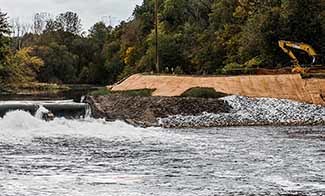
The Trowbridge Dam cleanup will cost an estimated $55 million and will take three years to complete. In that time, NRC Corp. is responsible for excavating the contaminated sediment, stabilizing 2.4 miles of riverbank, removing the dam and restoring any areas impacted by the removal efforts.
Contaminated space to community place
So, what will occupy this once-contaminated space? Potentially, a community place.
An open house was held in Trowbridge Township in August to discuss the recreational use of this space. State, county and local officials met to consider potential recreation opportunities for the waterfront property adjacent to the Trowbridge Dam. Currently this parcel of land is part of the Allegan State Game Area and is managed by the DNR.
|
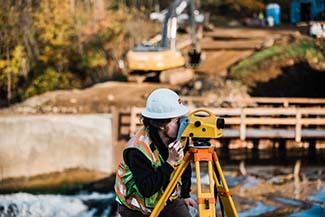
No matter the decision, it is certain that the benefits of this project will be plentiful and observable. Fish will be able to migrate upstream, water quality and wildlife habitat will be improved, recreationists will be able to explore more of the river, and the lingering worry of a failed dam will dissolve.
Historic burdens
There are approximately 2,500 dams on rivers and streams throughout the state, ranging from small berms to large hydroelectric dams. Many of these structures were installed nearly a century ago and require intense observation and maintenance to be kept in stable condition.
According to the Michigan Department of Environment, Great Lakes, and Energy, 1,059 dams are regulated by the state. Of these, 730 are privately owned and 329 are owned by the public. Another 92 dams are regulated by federal agencies, while 1,370 smaller dams are unregulated.
|

Owners of dams are responsible for infrastructure upkeep, which can be burdensome, as the price tag on repairs and maintenance monitoring is heavy. However, as seen this spring when the Edenville Dam in Midland County failed, neglecting these frailties can lead to devastation.
The Trowbridge Dam removal is slated to be completed in 2022. This will be the final state-owned dam to be removed from the Kalamazoo River, which will come as a relief to local land managers.
“This effort has been a constant priority and concern since the state first decided to pursue removal of the dams in 1984. Successfully removing Trowbridge Dam and restoring the flow of the Kalamazoo River will have tremendous positive impacts to the health of the river and its wild inhabitants and will further enhance the recreational opportunities available to the public,” Mills said. “That said, there’s still more work to accomplish, including the removal of the Otsego City and Allegan City dams.”
|
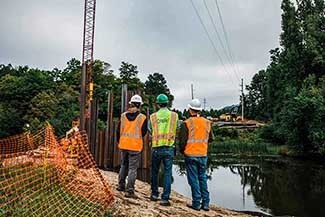
The continued efforts put forth by the DNR, EPA and partners to protect the Kalamazoo River watershed are crucial for the health of Michigan’s waters and the character of our state.
Nearly all waterways in Michigan flow into the Great Lakes, and more than 30 million people in eight states and Canada acquire their drinking water from the lakes, as reported by the National Oceanic and Atmospheric Administration.
In addition to being home to the largest freshwater ecosystem in the world, the Great Lakes region is an economic powerhouse, supporting numerous water-based industries and supplying $8.8 billion in wages annually.
As Michiganders and stewards of the land, we are all responsible for the health and integrity of our waters. The ongoing actions to restore the Kalamazoo River watershed have made tremendous improvements to water quality, wildlife habitat and recreational opportunity.
The removal and remediation of the Trowbridge Dam will undoubtably further those achievements.
Learn what you can do to support Kalamazoo River restoration efforts by visiting the Kalamazoo River Watershed Council webpage.
|
Check out previous Showcasing the DNR stories in our archive at Michigan.gov/DNRStories. To subscribe to upcoming Showcasing articles, sign up for free email delivery at Michigan.gov/DNR.
/Note to editors: Contact: John Pepin, Showcasing the DNR series editor, 906-226-1352. Accompanying photos and a text-only version of this story are available below for download. Caption information follows. Credit Michigan Department of Natural Resources, unless otherwise noted.
Text-only version - Kalamazoo Dam Removal
Photo 1: The Trowbridge Dam is shown before the removal and stabilization project was initiated. On the right is the earthen embankment, which is built over the location where the Kalamazoo River was historically located before the dam was built. In the center is the dam spillway. To the left is the foundation of the former powerhouse, which was partially removed during the first phase of dam removal. Photo credit: Kendra Stanley-Mills.
Photo 2: The Trowbridge Dam is shown before the removal and stabilization project began. This photo shows the spillway in the foreground. The powerhouse was built located on the concrete wall in the background. It was demolished in the 1970s. Photo credit: Kendra Stanley-Mills.
Photo 3: Large excavators equipped with vibratory hammers were used to install metal sheet piles along areas of the Trowbridge Dam vulnerable to erosion. Photo credit: Kendra Stanley-Mills.
Photo 4: Metal sheet piles were driven into the embankments in key areas to prevent failure of vulnerable sections of the Trowbridge Dam. Photo credit: Kendra Stanley-Mills.
Photo 5: The Trowbridge Dam spillway was undersized to accommodate flood flows through the dam structure. Photo credit: Kendra Stanley-Mills.
Photo 6: An important component of the Trowbridge Dam removal project was the stabilization of the earthen embankment shown here, to the right of the spillway. Metal sheet piles, grouted rock and vegetation were used cooperatively to achieve stability to ensure the embankment will not fail. Photo credit: Kendra Stanley-Mills.
Photo 7: A surveyor documents final construction grades for the project. In the background an excavator is used to remove the Trowbridge Dam powerhouse superstructure. Photo credit: Kendra Stanley-Mills.
Photo 8: Mark Mills, field operations manager for the Michigan Department of Natural Resources’ Wildlife Division, inspects the excavated substructure of the Trowbridge Dam powerhouse. This is the portion of the powerhouse where the water flowed through turbines. Photo credit: Kendra Stanley-Mills.
Photo 9: Contract crews work to install cement-like grout between the rock slopes during the removal and stabilization phase. In the background is the partially removed powerhouse and the Trowbridge Dam spillway (partially obstructed far in the background). Photo credit: Kendra Stanley-Mills.
Photo 10: Michigan Department of Natural Resources Deputy Director Shannan Lott, DNR Field Operations Manager Mark Mills and DNR Director Dan Eichinger observe the construction site. Photo credit: Kendra Stanley-Mills./
|